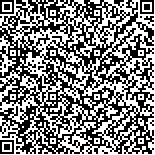| 引用本文: |
贺平,张娟,刘海玲,王应军.穴位埋针结合常规康复治疗缺血性中风后下肢功能障碍的临床观察[J].湖南中医药大学学报,2020,40(2):214-218[点击复制] |
|
| |
|
|
| 本文已被:浏览 1974次 下载 498次 |
| 穴位埋针结合常规康复治疗缺血性中风后下肢功能障碍的临床观察 |
| 贺平,张娟,刘海玲,王应军 |
| (宁乡市中医医院, 湖南 宁乡 410600) |
| 摘要: |
| 目的 观察埋针疗法结合常规康复对缺血性中风后下肢功能障碍的临床疗效。方法 将60例缺血性中风后下肢功能障碍的患者分为治疗组和对照组,每组各30例。在常规治疗的基础上,对照组使用常规康复治疗,治疗组使用常规康复治疗结合埋针疗法,取足三里、上巨虚、下巨虚三穴。治疗2个疗程后,治疗前后检测血浆凝血酶原时间(prothrombin time, PT)、活化部分凝血活酶时间(activated partial thromboplastin time, APTT)、纤维蛋白原(Fibrinogen, Fib)指标水平,观察两组治疗前后Fugl-Meyer运动功能评分、神经功能缺损评分(neurologic impairment score, NIHSS)的改善情况,评估其临床疗效。结果 治疗完成后,治疗组总有效率为93.3%,对照组为76.7%,两组比较差异具有统计学意义(P<0.01);两组治疗后 PT、APTT、Fib 均较治疗前降低(P<0.01),且治疗组治疗后低于对照组(P<0.05);两组治疗后Fugl-Meyer评分、NIHSS评分均较治疗前明显改善(P<0.01),且治疗组改善优于对照组(P<0.05)。结论 埋针疗法结合常规康复治疗能够加快缺血性中风后下肢功能障碍患者康复进程,疗效显著,值得临床推广应用。 |
| 关键词: 缺血性中风 下肢功能障碍 埋针疗法 康复训练 凝血酶原时间 运动功能评分 神经功能缺损评分 |
| DOI:10.3969/j.issn.1674-070X.2020.02.019 |
| 投稿时间:2019-09-18 |
| 基金项目:湖南省中医药科研计划项目一般课题(201865)。 |
|
| Clinical Observation on the Effects of Acupoint Needle Embedding Combined with Routine Rehabilitation on Lower Limb Dysfunction after Ischemic Stroke |
| HE Ping,ZHANG Juan,LIU Hailing,WANG Yingjun |
| (Ningxiang Traditional Chinese Medicine Hospital, Ningxiang, Hunan 410600, China) |
| Abstract: |
| Objective To observe the clinical effects of needle embedding therapy combined with routine rehabilitation on lower limb dysfunction after Ischemic stroke. Methods A total of 60 patients with lower limb dysfunction after Ischemic stroke were divided into 2 groups. The control group was treated with routine rehabilitation therapy, while the treatment group was treated with needle embedding therapy combined with routine rehabilitation therapy. Take 3 acupoints, namely Zusanli (ST36), Shangjuxu(ST37) and Xiajuxu (ST39). After 2 courses of treatment, the levels of plasma prothrombin time (PT), activated partial thromboplastin time (APTT), and Fibrinogen (Fib) were measured before and after treatment. Observe the two groups The improvement of motor function score (Fugl-Meyer) and neurological impairment score (NIHSS) of the 2 groups before and after treatment were evaluated for its clinical efficacy. Results After treatment, the total efficacy rate were 93.3% in the treatment group and 76.7% in the control group. The difference between the 2 groups is statistically significant (P<0.05). After treatment, the PT, APTT, and Fib of the two groups were lower than before treatment (P<0.01), and the treatment group was lower than that of the control group (P<0.05). The Fugl-Meyer score and the NIHSS score of the 2 groups significantly improved than those before treatment (P<0.01), and the improvement in the treatment group was better than that in the control group (P<0.05). Conclusion Needle-embedding therapy combined with routine rehabilitation therapy could quicken the the course of treatment for lower limb dysfunction after Ischemic stroke, and the curative effect is remarkable. It is worthy of clinical application. |
| Key words: ischemic stroke lower limb dysfunction embedding needle therapy rehabilitation training prothrombin time motor function score neurological impairment score |
|

二维码(扫一下试试看!) |
|
|
|
|




